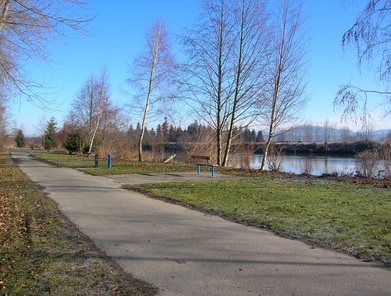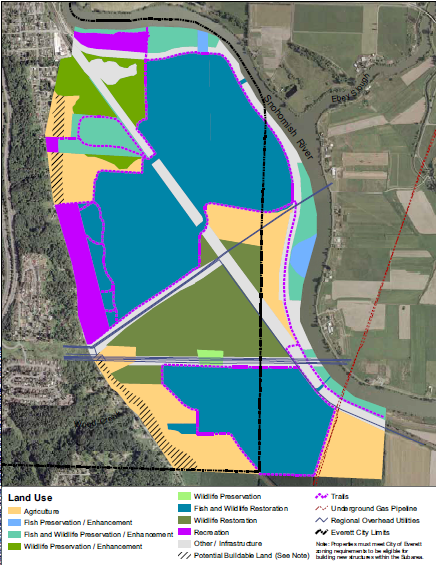Everett Marshland Tidal Wetland
History of Everett Delta

The Everett Delta feeds into the Snohomish River. The Snowhomish River basin is home to five species of salmon including NOAA’s ESA listed Chinook Salmon.Historically Chinook salmon populations in the Snohomish River basin were estimated at 20,000 -50,000. The average Chinook salmon run between 1987-1998 was approximately 4,000 [8]. Research shows significant increase in growth and survivorship of salmon that live in rivers that have floodplains [9].To help encourage the salmon populations in the Snohomish River a restoration of processes that occur in the delta has been proposed.
Proposed Restoration

The proposed site is complex as it’s has proposed mixed uses. There is a history of agricultural use for land in the area. Currently land owned by the city as well as private land is agriculturally developed. Land acquisition is needed in order to achieve the size necessary in the proposed plan. To keep these farmlands from flooding diking and a water pump system has been used and would need to be removed before tidal flow could be restored [10]. The expansion of riverfront trail systems has been proposed to increase public access to the completed restoration. The nearby Lowell riverfront trails are located near this site and expansion into the restoration site would allow people to view wildlife [11].
A Project On PauseAlthough the proposed mix use restoration plan has designated areas set aside to maintain agriculture, it is still a significant reduction. While the health of the Snohomish River salmon population has important economic and commercial implications for this area, so does agriculture. A key to seeing a restoration project reach completion is the community support behind it. In planning the uses of space it is important to make compromises that ensure the needs of stake holders are met. Public hearings are a tool that allows community members to come forward for the discussion and sharing of information in this process. Public outreach is vital to the progression in any restoration process. Currently the City of Everett is still in the process of determining community needs.
|

